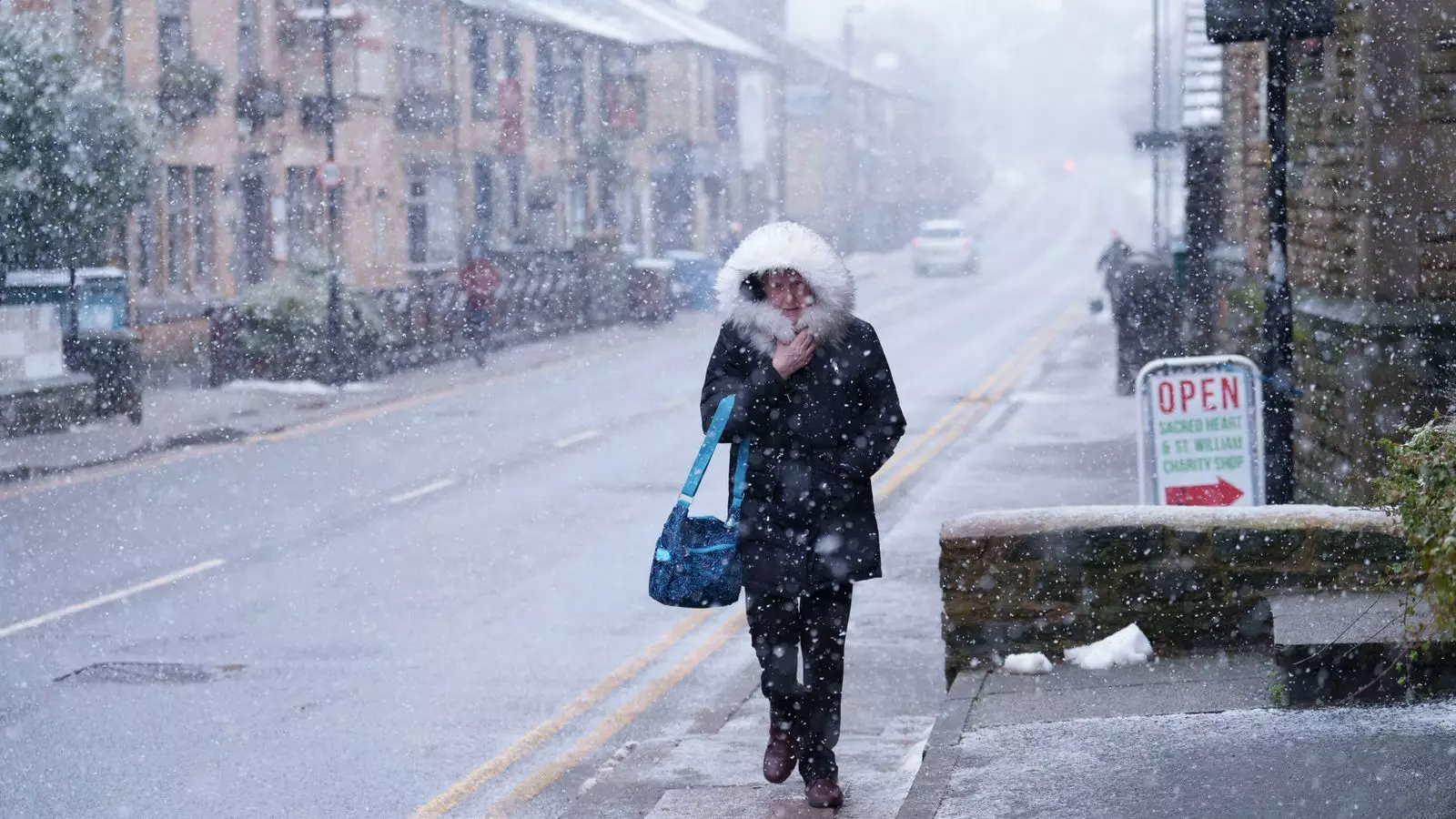The recent weather forecasts have prompted serious concerns across southern England, where a new yellow weather warning for snow has been issued. Effective from 9 am to midnight on Wednesday, this advisory affects a broad span of territories including Kent, Cornwall, and extending towards South London. Such measures are not uncommon during winter months, but this particular warning illustrates an intensifying weather pattern that could be consequential for both daily life and infrastructure. The Met Office estimates a potential accumulation of snow between two to five centimeters in general areas, but higher altitudes could see up to ten centimeters, raising the stakes for travelers and the general populace alike.
In addition to snow, this week has projected the coldest nighttime temperatures of the year, with predictions dropping as low as -14C on Wednesday evening and reaching even harsher conditions of -16C in certain northern regions by Thursday. The implications of such temperatures are manifold, posing risks that extend from individual health concerns to more systemic infrastructural challenges. Icy conditions, particularly on untreated roads, are expected to complicate travel plans and pose a heightened risk for accidents. With many parts of England bracing for severe weather, there is a pressing need for caution and preparedness among residents and local authorities.
Compounding the issues presented by the wintery conditions, areas across England have also been grappling with the aftermath of substantial flooding. In a recent report, it was noted that over 300 properties have encountered flooding since the New Year’s Eve downpour, with the Environment Agency estimating 41,000 properties have managed to avoid damage, thanks to preventative measures. As surface water and river flooding became rampant in regions like the North West of England and Yorkshire due to heavy rainfall and snowmelt, the situation necessitated urgent attention from emergency services and local governments. This situation underscores a troubling trend: the growing frequency of extreme weather events that disrupt communities and challenge existing preparedness protocols.
In light of these dire weather warnings, officials have urged citizens to heed the advice of the Environment Agency and emergency services. Floods Minister Emma Hardy expressed genuine empathy for the people and communities affected by the flooding, underscoring the importance of ongoing communication and vigilance. With numerous flood warnings in effect—approximately 100 by Wednesday—residents are reminded to keep abreast of updates and adhere to safety advisories.
Furthermore, specific regions, such as Barrow upon Soar in Leicestershire, received a danger-to-life warning concerning the River Soar. While this particular warning has since been lifted, the precautionary measures it prompted—like large-scale evacuations in caravan parks—highlight the actual dangers posed by unforeseen weather events. Firefighters in Leicestershire have been actively engaged in rescue operations, illustrating the real-time response required during such crises.
The ramifications of the weather warnings extend well beyond just property. Routine activities have drastically been impacted, with hundreds of schools across the United Kingdom closing their doors to protect students and staff from dangerous commute conditions. Significant disruptions to roadways and rail networks have also been reported, with key airports such as Manchester, Bristol, and Liverpool John Lennon suspending flights due to adverse weather. These interruptions serve as a reminder of the interconnected nature of infrastructure and the need for cohesive emergency management strategies.
As southern England braces for these impending weather challenges, it becomes imperative to engage in thoughtful preparation, both at the community and governmental levels. This encompasses not only immediate response strategies to tackle snowfall and flooding but also a longer-term re-evaluation of infrastructure resilience against frequent and extreme weather patterns. Ultimately, a proactive approach might ensure that the populace remains safe and that society can function efficiently, even in the face of daunting natural challenges. In a rapidly changing climate, such measures are not just prudent; they are essential.

